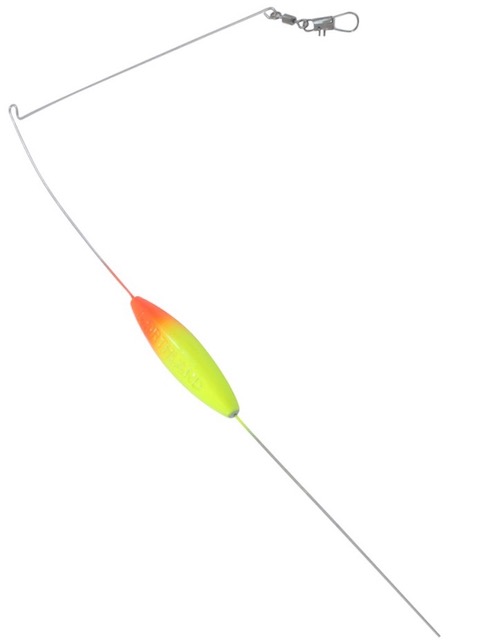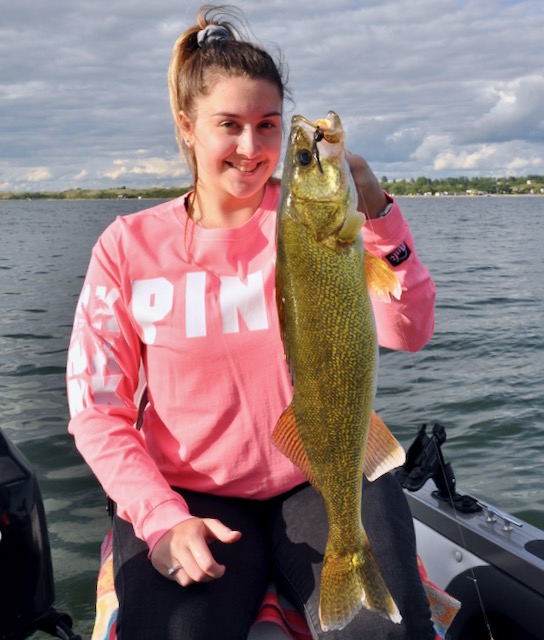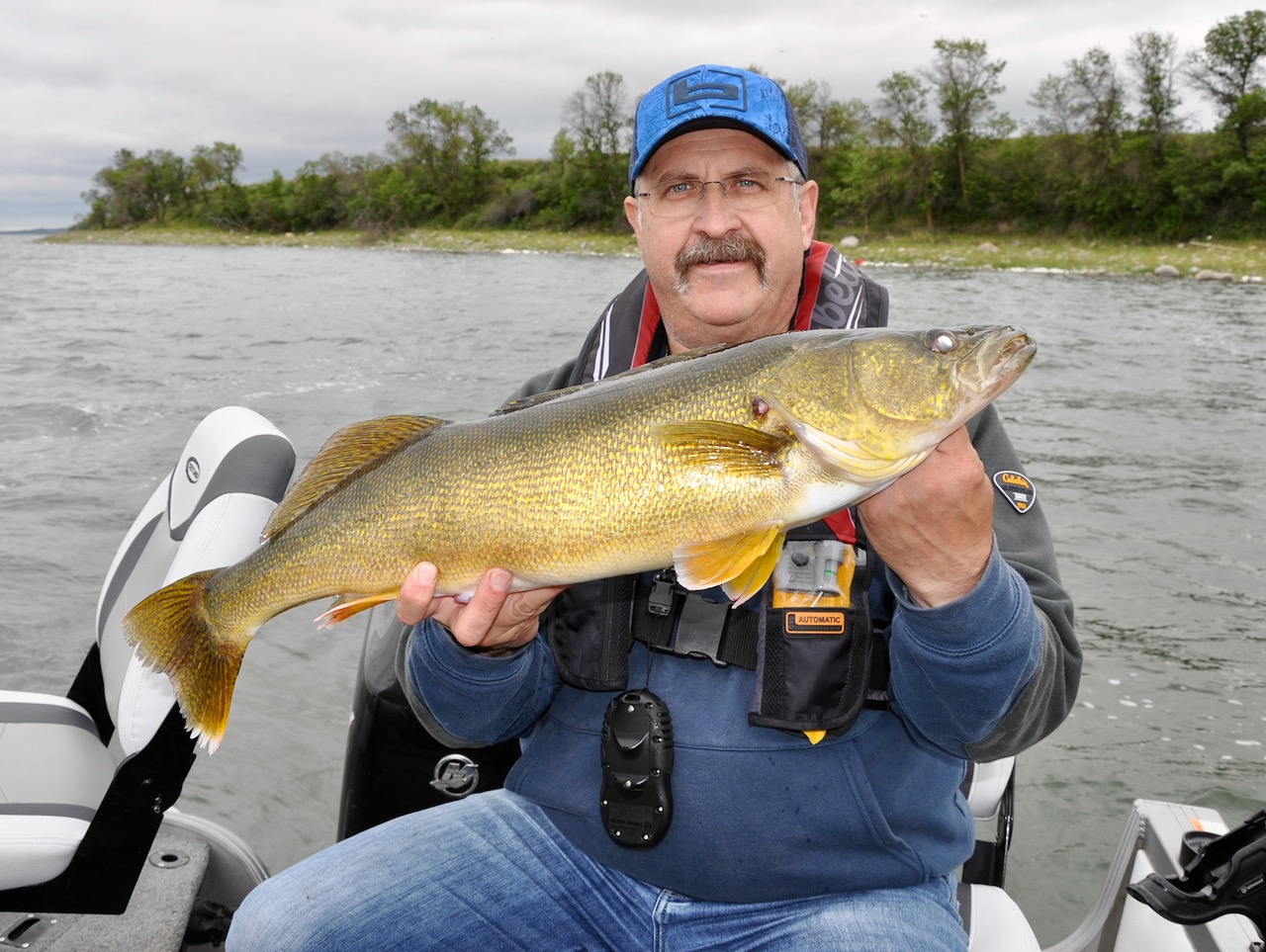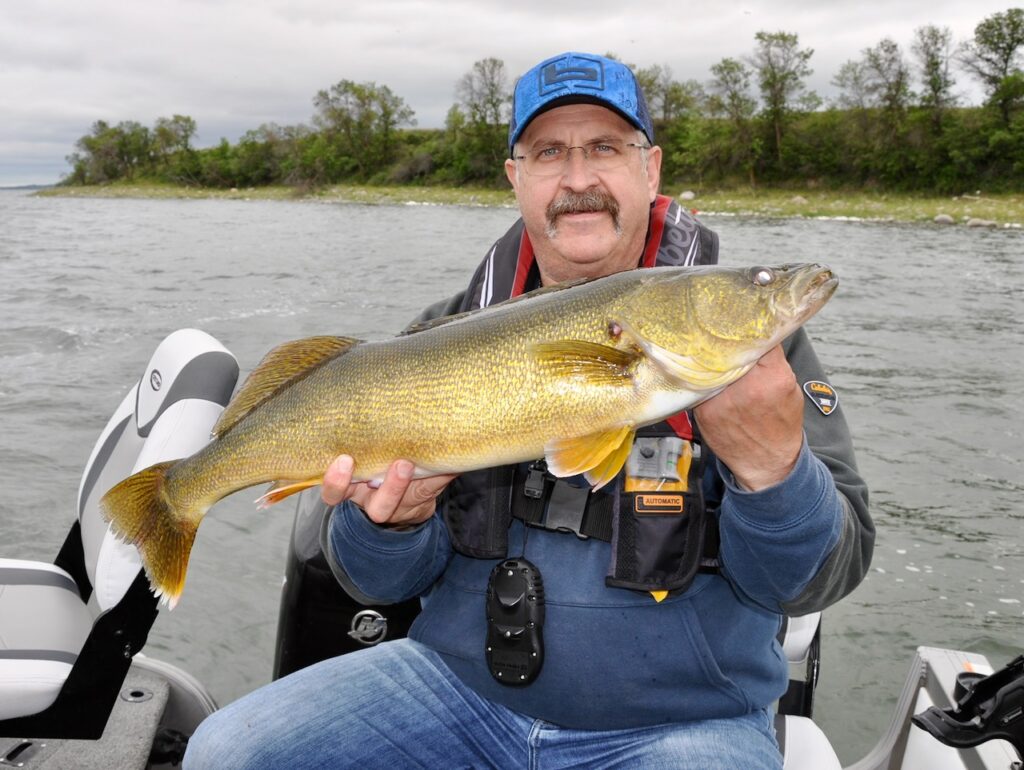Vertical thinking
New to bottom-bouncing for walleye, or just looking to up your game? These tips have you covered
Advertisement
PART 1: THE TECHNICAL ASPECT OF BOTTOM BOUNCING
For the uninitiated, bottom bouncing is a vertical trolling presentation using a specialized sinker rig—a bottom bouncer—that keeps your bait close to bottom. The most commonly used style of bouncer is a length of rigid wire bent into a 7-shape, with a lead weight attached halfway up the vertical section. The fishing line is tied to the elbow, and the bait, usually some kind of spinner rig, is fastened to the horizonal part of the 7-shape with a long leader. When trolling this rig, your main line remains roughly vertical, while the bait streams out behind on the leader just above bottom. And since only the tip of the wire contacts the bottom, bouncer rigs are quite snag resistant.
Advertisement
CHOOSING A BOUNCER
Walk into any tackle shop and you’ll see an array of bottom bouncers, ranging in weight from a quarter ounce to three ounces. Although there are a few different shapes, the 7-style is my go-to most of the time (below). When selecting a weight, the rule of thumb is to use one ounce of weight for every 10 feet of depth. That said, there are times when the 10-foot rule needs to be adjusted. For example, you need a heavier weight when fishing in strong current or choppy waves. Also, when trolling at higher speeds, you may need a heavier weight to keep your line vertical; inversely, you often need to go lighter when trolling at slower than usual speeds.

It can also be beneficial to have anglers in the same boat running different weights. I’ve found that novices and youngsters benefit from using a heavier weight, which gives them a better feel for the rig. When fishing with multiple anglers on the same the side of the boat, tangles are always a worry, so those situated towards the stern should use the lightest weight possible; anglers toward the bow can upsize their weights by a half-ounce per position. This lets the front anglers fish shorter lines, reducing the chances of tangling with the rigs in the back.
USING THE RIGHT TACKLE
I suggest a six- to seven-foot medium- or medium-heavy-action rod for bottom bouncing. The rod needs to be sturdy enough to pull the bouncer without doubling over, yet sensitive enough that you can feel a strike. To reduce tangles when fishing with multiple anglers, use shorter rods at the back of the boat, and longer rods up front to keep the lines further away from the boat.
Advertisement
While spinning reels work for bottom bouncing, my choice is a baitcaster. Baitcasters allow more precise control when letting out and reeling in line, helping you maintain contact with the bottom and respond to depth changes. For added sensitivity, you can also hold the baitcaster with your thumb on the spool. Many anglers prefer braided line for bottom bouncing because it’s more sensitive than mono. I recently switched to Berkley’s Nanofil super-line, which I find even more sensitive. Whatever the case, you need at least 20-pound-test.

FISHING THE BOUNCER
Bottom bouncers should be barely skimming the bottom as you troll. The best way to achieve this is with a two-staged line release. First, get to your desired trolling speed (see next section). Next, gently lower your bottom bouncer to just below the surface so you can check that the bait is tracking properly behind it, then release the line. Once you feel the small thud of the weight hitting bottom, immediately stop letting out line and pause for a couple of seconds to let the forward motion of the boat straighten everything out down below. Then let out a little more line until you feel the bouncer hit bottom again. At that point, take your reel out of free spool or close the bail. Now you’re fishing with your main line as close to vertical as possible.
Advertisement
CHOOSING A SPEED
Your optimum boat speed depends on what you’re pulling. These are my recommendations for a variety of bottom-bouncer presentations.
- Traditional blades: 1 to 2.5 mph
- Propeller blades: 0.5 to 1.5 mph
- Slow death rigs: 0.8 to 1.2 mph
- Trick blades: 0.5 to 1.2 mph
- Lindy rigs: 0.5 to 0.8 mph
- Floating jigs: 0.5 to 1.5 mph
- Crankbaits: 1 to 3 mph
SETTING THE HOOK
When walleye are aggressive, they will smash your offering so hard they’ll often set the hook themselves. On those days, you can hold the rod in your hands or just set it in a holder and watch for the tip to bend and shake, signalling a hit. When walleye aren’t as aggressive, you need to keep the rod in your hands and concentrate on the bait. When you feel a walleye mouthing it, resist the urge to set the hook. Instead, maintain pressure on the line while slowly moving your rod tip back towards the fish. Then set the hook with a powerful sweep of the tip.
If you aren’t getting hits, periodically pull your rod tip forward to lift the bottom bouncer and bait a little, then drop the rod tip to let everything settle back into place. Be at the ready for a bite when you do this— walleye will often pound the bait as it flutters back into position.


